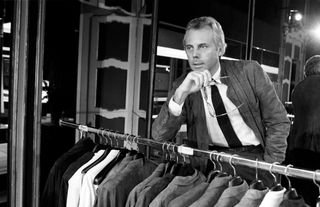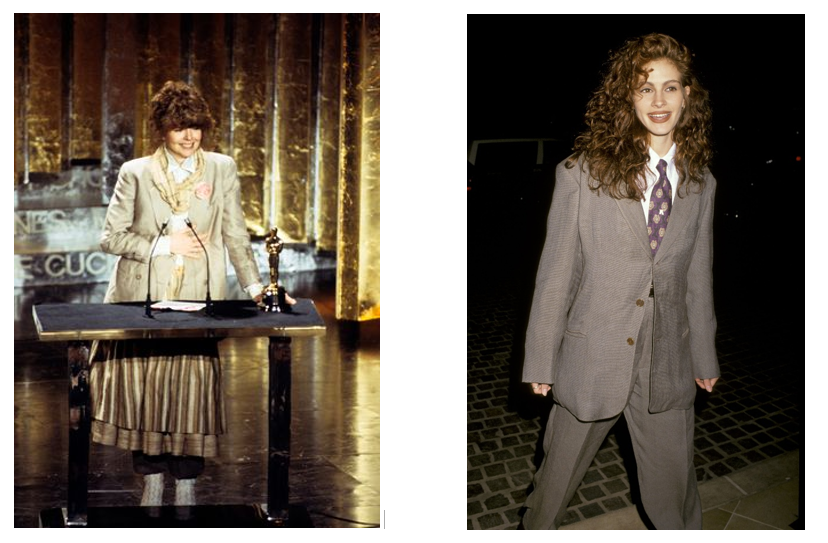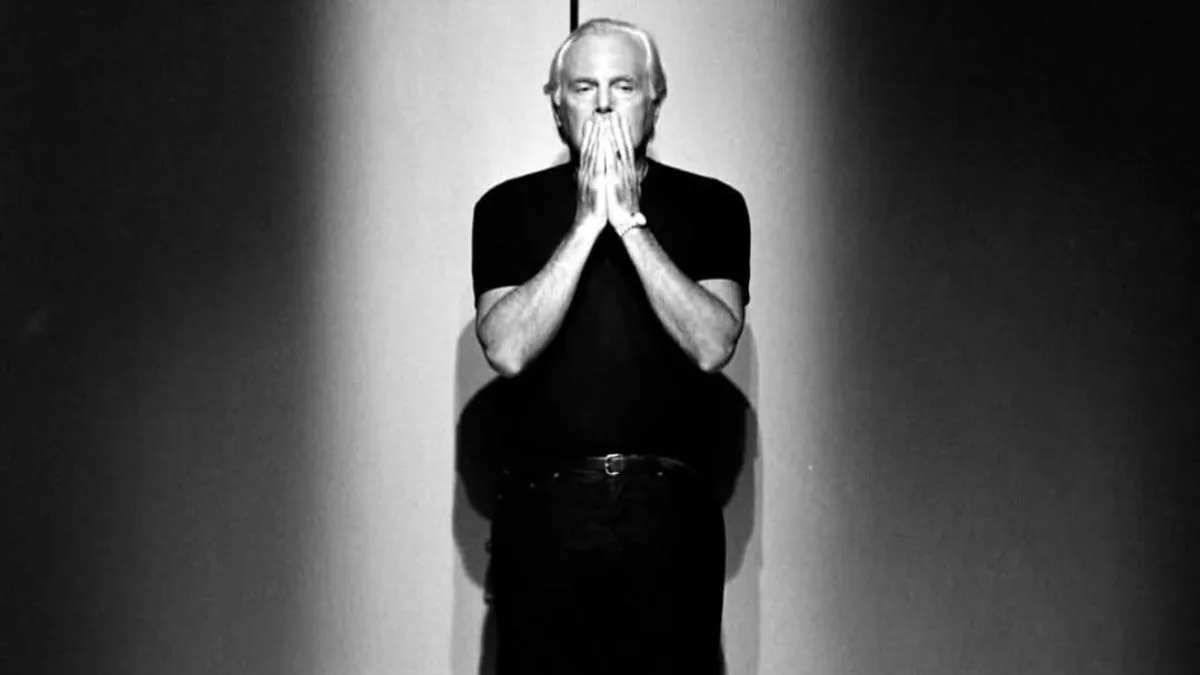“Elegance is not standing out, but being remembered.” Following Giorgio Armani’s passing on September 4th, it’s fitting to reflect on his fashion legacy and the brand he established. Armani introduced unstructured Italian tailoring to both European and American fashion markets, creating timeless ready-to-wear designs that dismantled the restrictive silhouettes of the 1970s. The name was not just a brand, it was a creation of fashion houses, luxury hotels, and fragrances which turned Armani into a timeless empire.
Born in Piacenza, Italy, in 1934, Armani’s path to fashion was anything but conventional. The designer once reflected that “war taught me that not everything is glamourous”. Growing up during World War Two, Armani and his friends played with unexploded shells until one tragically detonated, killing a child and severely burningGiorgio. This experience left him with a lasting awareness of fragility and discipline, qualities that later defined his restrained, purposeful approach to design. After briefly studying medicine, completing military service in 1957, and working as a window dresser in one of Milan’s leading department stores, he discovered a deep fascination with how clothing could shape perception and identity. By the late 1960s, Armani had moved into fashion design, working under Nino Cerruti before launching his own label in 1975 with his longtime partner, the late Sergio Galeotti. As Milan rose to prominence as a global fashion capital in the 1980s, Armani because its most recognisable ambassador, embodying new Italian modernity which balanced craftsmanship with international appeal.

The 1970s “marked a change between the prevailing socio-political and economic structures of the post-war world.” As Italy modernised and Milan emerged as a hub of design and industry, Armani’s work came to embody this transformation. His softly tailored suits of the decade, which were famously worn by Richard Gere in American Gigolo, replaced rigid formality with relaxed sophistication, reflecting the ease of a changing society. His fluid power suits for women aligned with the era’s evolving social roles and the growing female presence in the workplace, redefining professionalism with a quiet strength. Beyond clothing, Armani extended his minimalist aesthetic to interiors and hospitality through Armani Casa and Armani Hotels. With his muted colour palette, clean silhouettes, and understated elegance, Armani reshaped Italy’s image from ornate tradition to sleek modernity.

At the heart of Armani’s lasting influence is a design philosophy built on the belief that true elegance comes from simplicity. Rejecting the excess and ornamentation that had long defined luxury fashion, Armani emphasised form and movement over embellishment. His clothes were designed to empower the wearer rather than overpower them, offering a quiet confidence that stood in contrast to the flashier aesthetics of the 1980s. This restraint became his signature. Softly tailored jackets, unstructured suits, and neutral tones that conveyed authority without aggression. Whether dressing Hollywood icons or corporate professionals, Armani proved that minimalism could be its own kind of strength. His visual language of subtle power continues to shape modern fashion today.
Giorgio’s influence extended far beyond the runway. By the mid – 1980s, he had built the multilayered empire that reflected his meticulous control and uncompromising vision. Under the Armani umbrella, he launched lines such as Emporio Armani, Armani Exchange, and Armani Privé, each catering to different markets while maintaining the brand’s core values of refinement and simplicity.Unlike many of his contemporaries, Armani retained ownership of his company, ensuring creative independence and consistency across all endeavours. His expansion into fragrance, cosmetics, and home interiors demonstrated how fashion could evolve into a holistic lifestyle. In doing so, Armani proved that elegance was not confined to clothing but could shape every aspect of contemporary living. His persistent independence and strategic diversification set a precedent for future designers, showing that creative control and commercial success could co-exist within a single visionary enterprise.
Giorgio Armani reached far beyond the realm of fashion, leaving an indelible mark on culture, design, and the very idea of elegance itself. His aesthetic, which was rooted in restraint, balance, and quiet confidence, redefined how power and sophistication could be expressed. This shaped not only the wardrobes of Hollywood icons, but the mindset of an entire generation. Armani’s minimalist vision anticipated today’s fascination with quiet luxury, proving that true style lies in subtlety rather than excess. More than a designer, he became a cultural architect, transforming the name ‘Armani’ into a global symbol of modern refinement and Italian excellence. As trends rise and fall, his legacy endures in the timeless simplicity he championed. As Armani himself once said, “Fashion anticipates, and elegance is a state of mind”, a sentiment that encapsulates his belief in style as something deeper than surface. We remember Armani with respect, recognising that true elegance remains timeless and enduring.





















